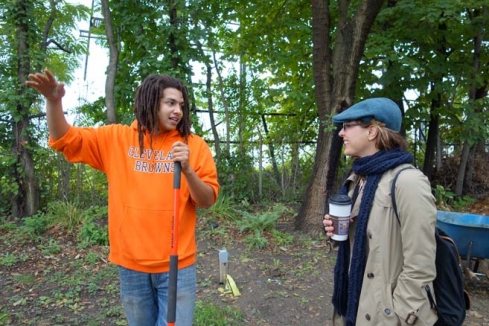Artist Space Development: Financing
LINC, Urban Institute: Chris Walker
This report is the result of research conducted in 2004 and 2005, following up on the findings in Investing in Creativity regarding the impacts of gentrification on artists. LINC commissioned the Urban Institute to survey artist spaces around the country and study seven communities in which spaces had been developed.
The report:
- Examines different types of space and developers of artist space projects, showing points of overlap and correspondence in their motivations and the types of projects they develop;
- Looks at project process, focusing on how projects are developed, the effect of local regulation on features of design that project developers and occupants find important, and the different types of ownership and occupancy arrangements that projects have adopted;
- Analyzes the relationship between local real estate markets and local systems; how this synergy can be used to mobilize capital, expertise, and political clout; and how these affect overall costs and risks of investing in artist space projects; and
- Proposes specific recommendations for artists’ space development supporters as they consider actions to promote due consideration of artists’ space needs in the communities in which they operate.
Extracts
Project Occupancy | Affordability
The most compelling motivation for the creation of artists’ spaces is the shortage of appropriate spaces that are both affordable and available on the market. Artists and their supporters have, therefore, a strong interest in ensuring that projects remain affordable, and occupied by artists, for as long as possible.
Different forms of project ownership meet these objectives to varying degrees. As artists who have been renters can attest, for-profit landlords are generally free to raise rents as overall housing prices rise, even if it means displacing artists who can no longer afford their units. If artists own their units, their mortgage payments are typically fixed, thereby shielding them from the most serious effects of rising prices. So long as artists can afford the initial cost of ownership, their units remain affordable over the long term. However, there are no guarantees that subsequent buyers will be artists, meaning that over time, units once affordable to and occupied by an artist may disappear from the artist-occupied stock.
[. . .]
Recommendations
The most important steps public funders, foundations, intermediaries, and other supporters of artists can take to increase support for artist spaces is to play a more active role in the community and economic development systems within which they work. These systems consist of the relationships among developers, lenders, community development agencies, foundations, and others who work together to mobilize and allocate resources to accomplish community revitalization goals.
At all levels of these systems, participants have discovered and acted upon the deep connections between artists’ work and residence and the strength of local communities. Specific recommendations include:
Appeal to developers: Supporters of artist space development would do well to recognize, and appeal to, the arts-related motivations of many nonprofit and for-profit developers and lenders, many of whom seem to recognize the value of artists as project residents and community activists.
Introduction of mixed-use project elements: Commercial and nonprofit space, for example–as well as community programming, like youth arts education—offer a way to reinforce and demonstrate the community value of artists’ spaces. These spaces should become standard practice in artist space development.
Include artist studios in mixed-use projects: Development of scattered-site, mixed-use properties is an interesting and promising new strategy for revitalization of older commercial corridors, a growing focus of community economic development practitioners. Artists’ studios and living spaces along these corridors represent one of the few suitable uses for spaces no longer appropriate for most modern retail.
Form co-ops: Artist space development supporters should encourage formation of limited-equity cooperatives as a way to promote both long-term affordability and continuing occupancy by artists in the projects they develop. Cooperatives retain some important advantages over rental properties (even nonprofit-owned ones) and condominiums.
Encourage the arts in community plans: One of the most concrete strategies for longer-term support of artist space development is to encourage inclusion of arts and cultural elements in community plans, and government agency observance of the priorities outlined in the plans.
Tailor public subsidies for artists: Public subsidy programs should be tailored to the various types of artists’ spaces and the different ways in which they are created; e.g., a menu of financing options should match the different types of subsidies that live-work and studio projects require.
Studio space = economic development: Promoting concentrations of studio spaces would appear to be a low-cost way to promote creation of new clusters of economic activity. In weak market cities, where other prospects for economic growth are few, artist space creation may be an important springboard for both economic and residential market strengthening.
Work with CDCs: Because the strength of the nonprofit development system seems to be highly correlated with the likelihood that affordable artists’ spaces will be developed, cities with a strong community-based nonprofit sector appear to offer fertile ground for national promotion of artist space development as a revitalization strategy.

